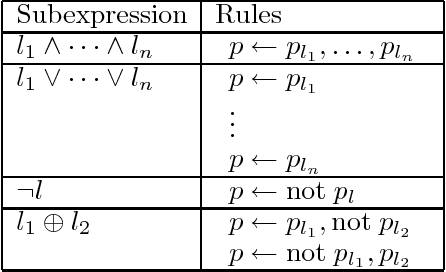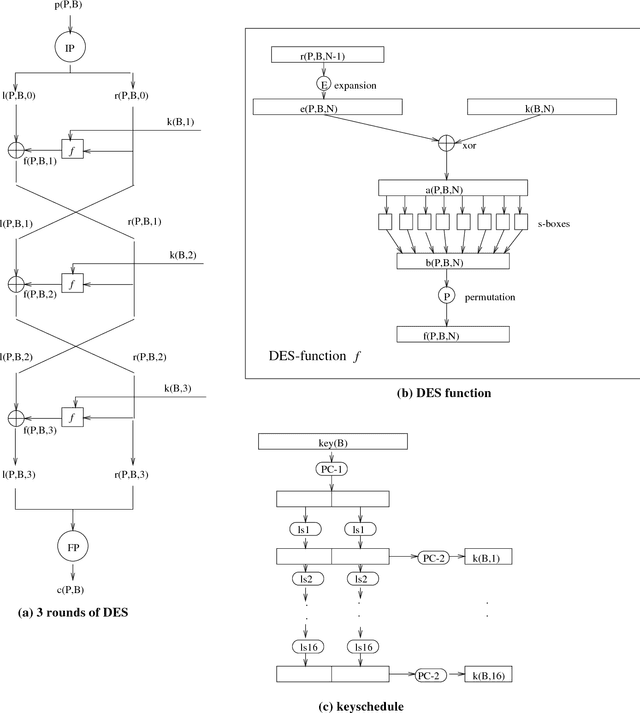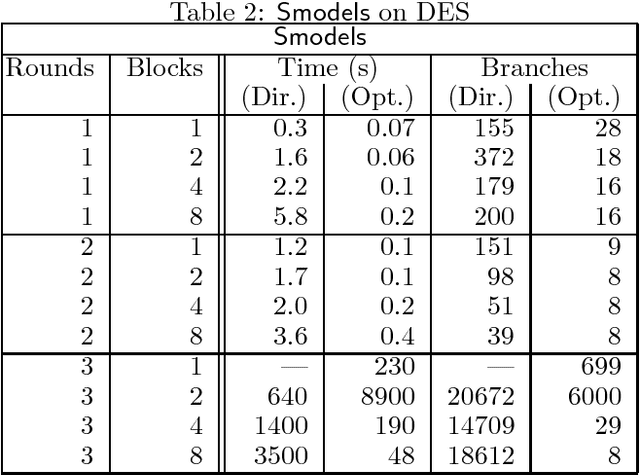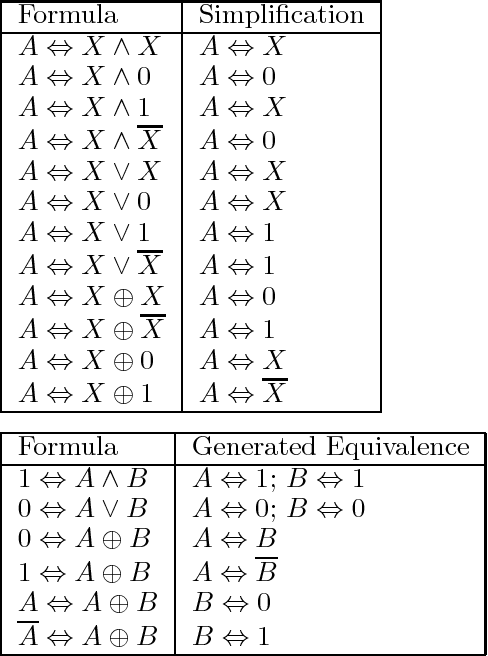Ilkka Niemela
Origins of Answer-Set Programming - Some Background And Two Personal Accounts
Aug 16, 2011Abstract:We discuss the evolution of aspects of nonmonotonic reasoning towards the computational paradigm of answer-set programming (ASP). We give a general overview of the roots of ASP and follow up with the personal perspective on research developments that helped verbalize the main principles of ASP and differentiated it from the classical logic programming.
Smodels: A System for Answer Set Programming
Mar 08, 2000
Abstract:The Smodels system implements the stable model semantics for normal logic programs. It handles a subclass of programs which contain no function symbols and are domain-restricted but supports extensions including built-in functions as well as cardinality and weight constraints. On top of this core engine more involved systems can be built. As an example, we have implemented total and partial stable model computation for disjunctive logic programs. An interesting application method is based on answer set programming, i.e., encoding an application problem as a set of rules so that its solutions are captured by the stable models of the rules. Smodels has been applied to a number of areas including planning, model checking, reachability analysis, product configuration, dynamic constraint satisfaction, and feature interaction.
DES: a Challenge Problem for Nonmonotonic Reasoning Systems
Mar 08, 2000



Abstract:The US Data Encryption Standard, DES for short, is put forward as an interesting benchmark problem for nonmonotonic reasoning systems because (i) it provides a set of test cases of industrial relevance which shares features of randomly generated problems and real-world problems, (ii) the representation of DES using normal logic programs with the stable model semantics is simple and easy to understand, and (iii) this subclass of logic programs can be seen as an interesting special case for many other formalizations of nonmonotonic reasoning. In this paper we present two encodings of DES as logic programs: a direct one out of the standard specifications and an optimized one extending the work of Massacci and Marraro. The computational properties of the encodings are studied by using them for DES key search with the Smodels system as the implementation of the stable model semantics. Results indicate that the encodings and Smodels are quite competitive: they outperform state-of-the-art SAT-checkers working with an optimized encoding of DES into SAT and are comparable with a SAT-checker that is customized and tuned for the optimized SAT encoding.
 Add to Chrome
Add to Chrome Add to Firefox
Add to Firefox Add to Edge
Add to Edge